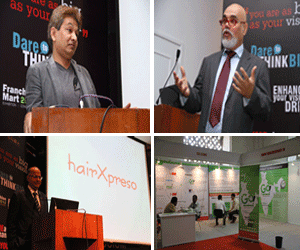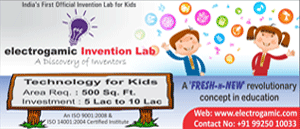With rising awareness for clean drinking water, demand for water purifiers has never looked so good in India.
India, home to 16 percent of the world’s population, has only 2.5 percent of the worlds land area and 4 percent of the world’s water resources at its disposal. Precipitation in the form of rain and snowfall provide over 4,000 trillion liters of fresh water to India says the Technology Mission Plan Document of the Union Ministry of Science & Technology
Most of this freshwater return to the seas and ocean via the many large rivers flowing across the subcontinent. A portion of this water is absorbed by the soil and is stored in underground aquifers. A much smaller percentage is stored in inland water bodies both natural (lakes and ponds) and man-made (tanks and reservoirs). Of the 1,869 trillion liters of water reserves, only an estimated 1,122 trillion liters can be exploited due to topographic constraints and distribution effects says Ministry of Water Resources, Development Alternatives.
The demand for water has been increasing at a high pace in the past few decades. The current consumption in the country is approximately 581 trillion liters with irrigation requirements accounting for a staggering 89 percent followed by domestic use at 7 percent and industrial use at 4 percent says a NCIWRD report of the Working Group on Water Resources for the XIth Five Year Plan and a KPMG analysis.
Water value chain
According to a report by KPMG India’s water segment can be classified in four major verticals:
n Water collection, harvesting, desalination and treatment
nWater supply and distribution
nSewage and sanitation services
nOther services
Of all the above another area which has seen much movement is the water purification market. With high rates or water borne diseases and dismal performance of water purification at the water supply level, water purification at home is a lucrative segment to operate in. The water purifier market is expected to scale up to Rs 7,000 crore by 2015 as against Rs 3,200 crore at present. Growing at a compounded annual growth rate (CAGR) of 25 percent, the water purifier segment is driven by the demand-supply gap of clean water, says industry chamber Assocham.
The global water purifier industry which is growing at about 8 percent annually is currently pegged at Rs 4.96 lakh crore which is likely to reach Rs 6.25 lakh crore by 2015, according to the study.
“The sector is likely to witness huge surge, more so as an expeditious growth in population is aiding lack of access to safe drinking water together with inadequate sanitation and hygiene,” said DS Rawat, secretary general of Assocham.
The water purifier industry in India is divided into two main categories — low cost water treatment products and high-end water purifiers. Low cost water purifiers which cater to the majority of the market are available in the range of Rs 500-Rs 5,000.
The premium water treatment products are available in the range of over Rs 5,000-Rs 40,000 and include brands such as Kent RO, Eureka Forbes, LG, Whirlpool, Panasonic and Philips.
According to Assocham, water purification can be explained as a process of removing undesirable chemicals, biological contaminants, suspended solids and gases from contaminated water. Water purification is mostly required for human consumption. However, the demand also comes for a variety of other purposes, including meeting the requirements of medical, pharmacological, chemical and some industrial applications.
The complete purification process typically includes physical processes such as filtration, sedimentation, and distillation, biological processes such as slow sand filters or biologically active carbon, chemical processes such as flocculation and chlorination and the use of electromagnetic radiation such as ultraviolet light.
According to a focused study published by Tech Archival, “India Water Purifiers Market Assessment & Future Opportunities 2008-2018,” the market is divided into three key segments – RO water purifiers, UV water purifiers and offline water purifiers. Among these three segments, RO water purifiers comprises the largest segment; accounting for 43 percent of the annualised sales volume in 2012, followed by UV based water purifiers (32 percent) and offline water purifiers (22 percent).
“This strong market demand has been favoured through quite a few factors, especially the prevalent water borne diseases in India, increased emphasis on safe water drinking habits, commercial product advertisements, rising affluence, rapid urbanization and an untapped market potential. At present, the demand for water purifiers comes mostly from urban areas. The Indian government is also putting their efforts to promote rural consumers to adopt safe water drinking habits and maintain sanitation. This positive outlook is benefiting the Indian water purifiers market, which is anticipated to grow at a CAGR of nearly 28 percent right through 2018,” said Manmohan Joshi, Research Director at Tech Archival.
According to Joshi since the market is growing at a steady pace, nearly all established players are investing heavily to increase their manufacturing capacities and diversify product portfolio.
The strong market growth is also attracting a number of other FMCG players to diversify into water purifier manufacturing, including big names such as Luminous, LG, Godrej, and Panasonic. “This has intensified rivalry within the players which, in turn, is increasing water purifier penetration levels and providing wider options for consumers to choose from,” added Joshi.
Consumers now have a range of options to select their preferred RO or UV purifier between Rs. 5000- 50,000 ($100-500) brackets, whereas offline purifiers are being retailed in the cushy range of Rs 550 – 3500 ($11–70).































 +91 9909960054
+91 9909960054